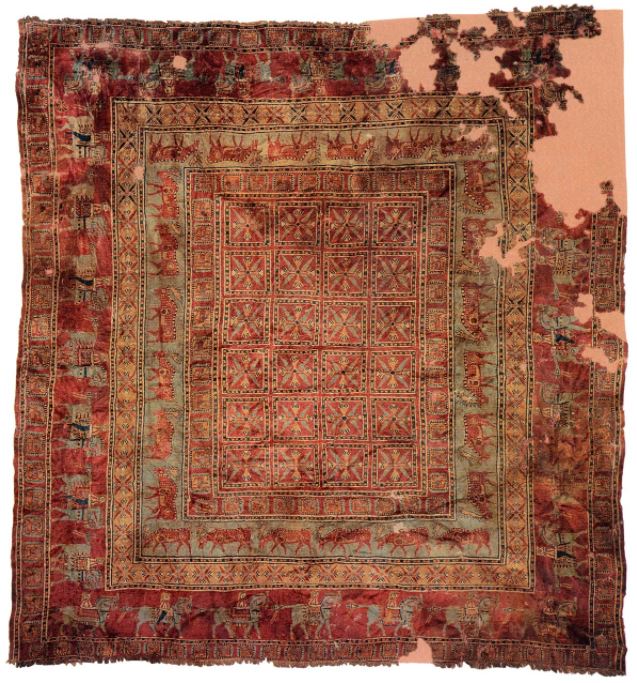A Brief History Of Hand-knotted Rugs

Handmade rugs, the ancient form of woven pieces have been crafted for over two thousands years. Over centuries, several epics, ancient writings and miniatures reference handmade rugs from their times and state the beauty of them. Writings of Homer and the legend of fabulous Baharestan (the famous Garden Rug from Sassanid Dynasty Period in Ancient Persia) are verbal proofs for the existence of rugs in that era.
The rich history of handwoven rugs goes back to at least 2.500 years ago. The discovery of the world’s oldest survived piled carpet in 1949 by Russian archaeologists was a outstanding moment for researchers and rug-lovers as having an actual sample from ancient times provided us with precious information. This elegant carpet is named Pazyryk after the location it was found in the Altai Mountains. The intricacy of the design and finer craftsmanship in this gorgeous rug imply a long history behind and thanks to the carbon testing, it is now dated to 500 B.C.
The history of rugs is closely related with the history of human settlement. It is believed that the first handmade rugs emerged from humans’ basic necessities for warmth, a sleeping mat, shroud for the dead, a bag to carry belongings especially in the nomadic times when tribes were wandering from one place to another. A simple functional rug is capable of creating a protected area from sand, wind and rain. It is due to this nature of the first rugs that it is extremely difficult to date and locate the earliest versions of the rug production.
Although the artistic and decorative aspects to rug creation have emerged in later centuries; the evidence tells us that rugs quickly became an object for humans to invest with spiritual elements. When they wove, they started including symbols from their belief systems, motifs from their surroundings and patterns that reflect their emotional state. As a result, each handmade rug comes with a unique spirit. It is predicted that as the quality and design of the rugs improved, they must have gradually gained economical value for the weavers.
Bespoke Crafts
However, woven crafts remained mostly personal and private up until more people turned to settled life which gave them the comfort of a more stable lifestyle. It was only then the “commercial” workshops began to emerge and the realm of trade saw “rugs for sale”. In the era of the kings and palaces, handwoven rugs have become a sign of prestige. Skillful artisans were brought into palaces to make customized unique rugs for kings.
Over the course of a time, the trade networks for rugs expanded beyond the far corners of Asia and entered into Western markets. Increased demand in trade led each tribe to develop characteristic elements for their products so that they are easily recognizable. They wanted to make their design exclusive to their tribe. To learn more about different patterns and designs that come from Persian tribes and cities, have a look at our Persian Rugs blog. As technique and trade further developed, finer decorative rugs became popular as well as area rugs. Some of these being made from silk are more fragile to high traffic areas therefore people hung them on their wall just like highly valuable paintings.
Today, this valuable art is widely known across the world and has become an important part of home interior. Having a rich history behind, hand-knotted fine rugs also have a collectible value and are seen as investment.
We invite you to go on a tour in our online store to have a taste of this beautiful art form.
